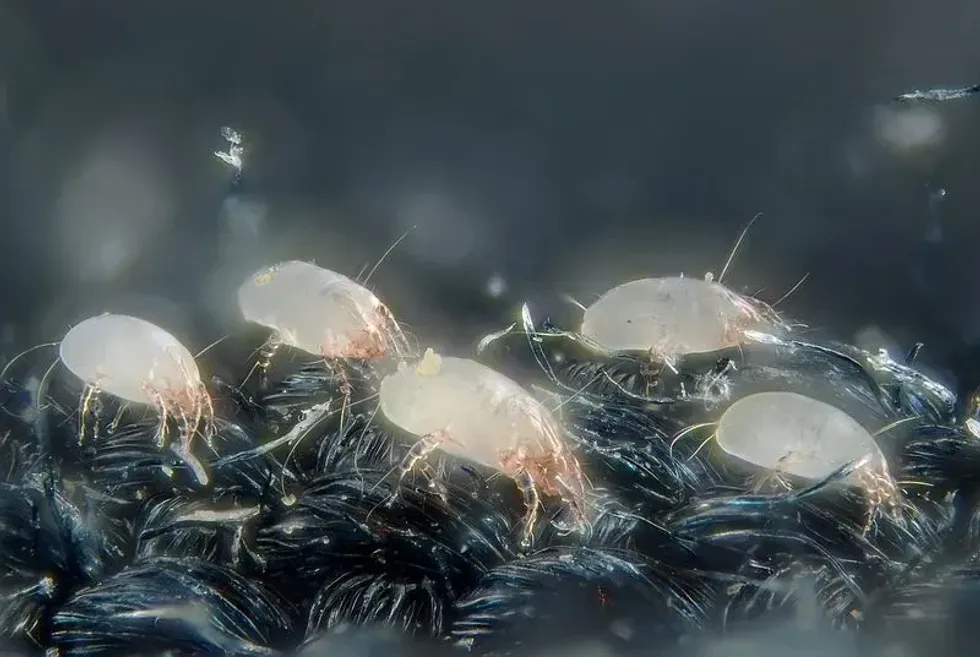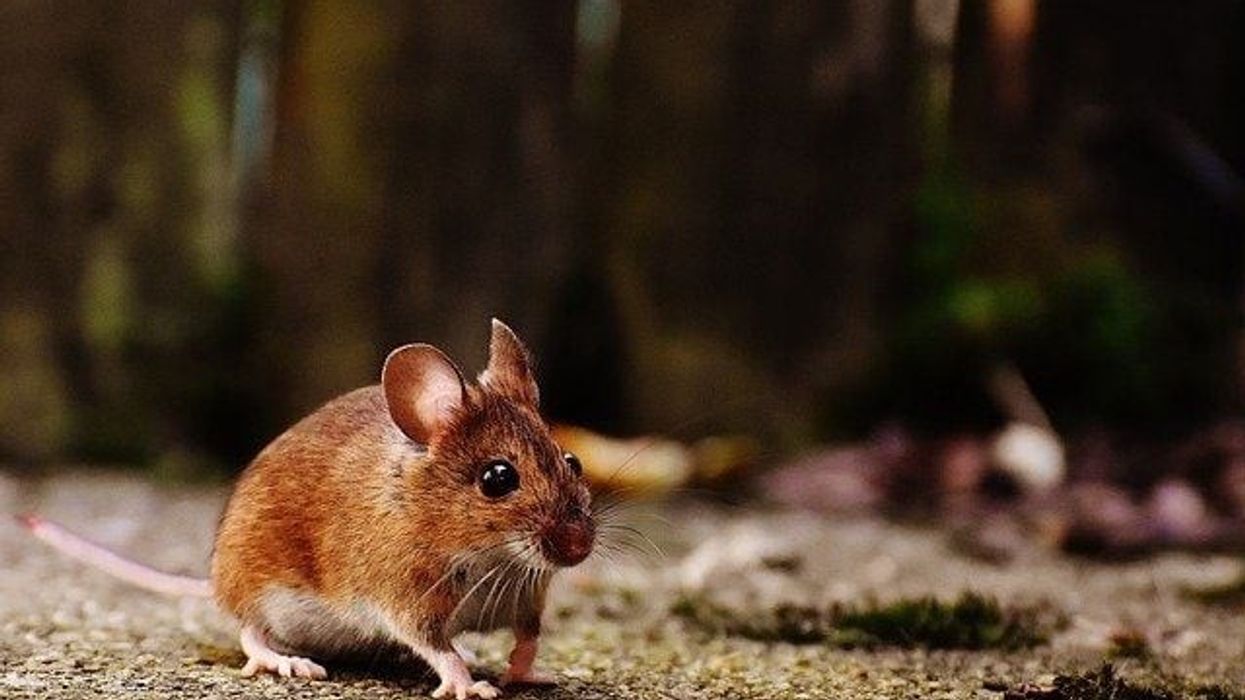Have you ever experienced insect bites when it is humid? Chances are, you could have experienced a mite bite.
Mites are tiny arachnids that inhabit a variety of habitats such as freshwater, brackish water, plants, soil, hot springs, animals (as parasites), flour dust, and skin flakes from humans. There are many mite species.
It is estimated by scientists that there are 45000-48,200 distinct mite species and parasitic forms of these can be found in the stomach, lungs, body tissues of animals, and nasal passages. Some species of mites are even carriers of animal and human diseases.
They are very small and are often microscopic in size. The smallest mite species is approximately 0.004 in (0.1 mm) in length, whereas the largest mites species is 0.25 in (6 mm). Some mites can also be seen with the help of a microscope.
There are no symptoms of bites from mites generally, but some species can cause scaly and itchy skin, sensitivity, skin redness, and a burning sensation. Many people are allergic to mites though. House dust mites play a large part in allergy development.
Mites typically are eight-legged arachnids. They generally breathe through air tubes or tracheae, but some mites respire through their skin! Keep reading to get to know more interesting mite facts about its habitat, physical features, diet, and more.
If you enjoyed reading our fun facts about mites, you must check out our cool gypsy moth and crab spider articles for kids!
Mite Interesting Facts
What type of animal is a mite?
Mites are eight-legged arthropods. They are small arachnids that are closely related to spiders and ticks. They are not insects. They belong to the groups Acariformes, Opilioacariformes, and Parasitiformes.
What class of animal does a mite belong to?
Like the orb-weaver spider, mites belong to the class of Arachnida.
How many mites are there in the world?
Mites are present in abundance across the world. They may be short-lived, but their reproductive rate is very high. Their populations multiple quickly with each female laying 20-30 mites every week!
Where does a mite live?
Mites are common in every continent except Antarctica. They thrive in places where there is increased air humidity (50-80%), the right temperature, and plenty of food.
Humans shed skin flakes on their beds and these are enough to feed thousands of mites for many years. This attracts mites to human homes and encourages them to dwell in mattresses, bedding, and at the bottom of the bed.
What is a mite's habitat?
Mites inhabit a wide range of habitats across the world. The habitat varies with every species.
Chiggers are known to inhabit damp rural areas where there is vegetation overgrowth with tall grass. They are found in cracks in the soil. Sarcoptes scabiei mites need to inhabit a host, like a human or animal, to survive.
They burrow into the skin of the host. They lay eggs in the skin of the host, potentially causing a condition called scabies, which can require medical treatment.
There are two types of Demodex mites that live in the body. Also known as the hair follicle mite, the Demodex folliculorum, inhabits follicles of hair on the face.
Demodex brevis mites inhabit the chest or neck. Bird and rodent mites live on animal hosts or in their nests. Oak mites live on oak tree leaves, on which crusted brown edges on the leaves can indicate the presence of oak mites.
Straw itch mites have been observed to live in stored grain, seeds, hay, trees, and leaf piles. Mites will die if the humidity is kept under 40% RH for three consecutive months.
Who do mites live with?
Mites often live in groups with millions of individuals of a species living close to each other.
How long does a mite live?
A mite can live for only as long as 30 days. The lifespan of a mite varies depending upon the species, but it can be said that mites live for a shorter period than most arachnids.
How do they reproduce?
The reproduction of mites creates a large number of them very quickly in indoor surroundings. A female can lay 20-30 eggs every week. The female lays eggs in the substrate, or in their occupied habitat.
The eggs hatch after six weeks with each first stage larvae possessing six legs. They become nymphs after three molts and possess eight legs. They become adults after three more molts.
What is their conservation status?
Not all species of mites have been evaluated by the IUCN. Mites are present in abundance across the world and only one species of mites is classified as Endangered, which is the moss mite (Oribatida).
Mite Fun Facts
What do mites look like?
The appearance and coloration of mites vary greatly. They can be brown, tan, reddish-brown, green, blue, or bright red in color. They are very small creatures that are similar to spiders in appearance. They can be seen only through a microscope as they range between 0.004-0.25 in (0.1-6 mm) in length.
How cute are they?
Mites are anything but cute and dust mite bites can cause significant irritation to humans (similar to flea bites on humans). They are spider-like creatures that can cause allergic reactions.
How do they communicate?
Similar to wasps, mites have been observed to secrete a pheromone that they use to communicate with each other. They communicate with each other to mate and form large groups.
How big is a mite?
Mites range between 0.004-0.25 in (0.1-6 mm) in length. They are tinier than a grain of sand and cannot be seen with the naked eye. Reduviidae insects are seven times larger than mites!
How fast can a mite run?
The speed of mites varies. They can be quite fast with one mite running as fast as 322 body lengths per second which is equivalent to 1300 mph (2092 kph).
How much does a mite weigh?
The weight of mites has not been evaluated yet. They are microscopic creatures, so it would be safe to assume that they are lightweight.
What are their male and female names of the species?
Males and females do not have particular names.
What would you call a baby mite?
Baby mites have different names for the different stages of their lives. A baby mite is known as a larva when it possesses only six legs. They become nymphs after three molts when they possess eight legs.
What do they eat?
The diet of mites includes a wide variety of items. Chigger larvae are known to bite humans and rodent and bird mites also bite humans if they leave their nest or their host dies. Oak mites feed upon small flies, but can also bite humans.
Predatory mites consume plants. Straw itch mites prey on insects and are also known to bite humans. Creatures of the genera Orius, Tetraphleps, and Anthocoris are natural predators of mites.
Are they dangerous?
They are dangerous as they can cause allergies and such allergies can often cause significant problems like asthma. Children are especially vulnerable to these allergies caused by mites.
House mites can also cause allergic eye reactions and atopic eczema. Scabies needs an animal or human host to exist, allowing mites to burrow into the skin of their human or animal host and lay their eggs there.
Medical treatment is necessary for this condition. Mites can be killed by extreme heat and cold and humans can also use specific repellants and sprays after figuring out the kind of infestation there is.
Would they make a good pet?
Mites are very tiny and cannot be seen by the naked eye. They are not suitable to become pets as they are known to bite humans.
Mite bites are itchy and can cause infection. Mite bites may require medical treatment as well. If you have experienced a bite, you should wash your bedding and clothes in soapy warm water to kill any mites inhabiting them.
They are considered pests by humans so are not kept as pets. However, the majority of mites are beneficial to the environment as they assist in decomposing decaying material.
Did you know...
An old and used mattress can be home to 100,000-10,000,000 mites!
Dust mites hate the scent of eucalyptus, lavender, peppermint, rosemary, and clove!
Is a mite a bug?
No, mites aren't insects. They are related to spiders and ticks more closely.
How many legs do mites have?
Mites have a thorax, head, abdomen, and four pairs of legs.
Here at Kidadl, we have carefully created lots of interesting family-friendly animal facts for everyone to discover! Learn more about some other arachnids from our rosy maple moth fun facts and cabbage white butterfly surprising facts pages!
You can even occupy yourself at home by coloring in one of our free printable mite coloring pages!










